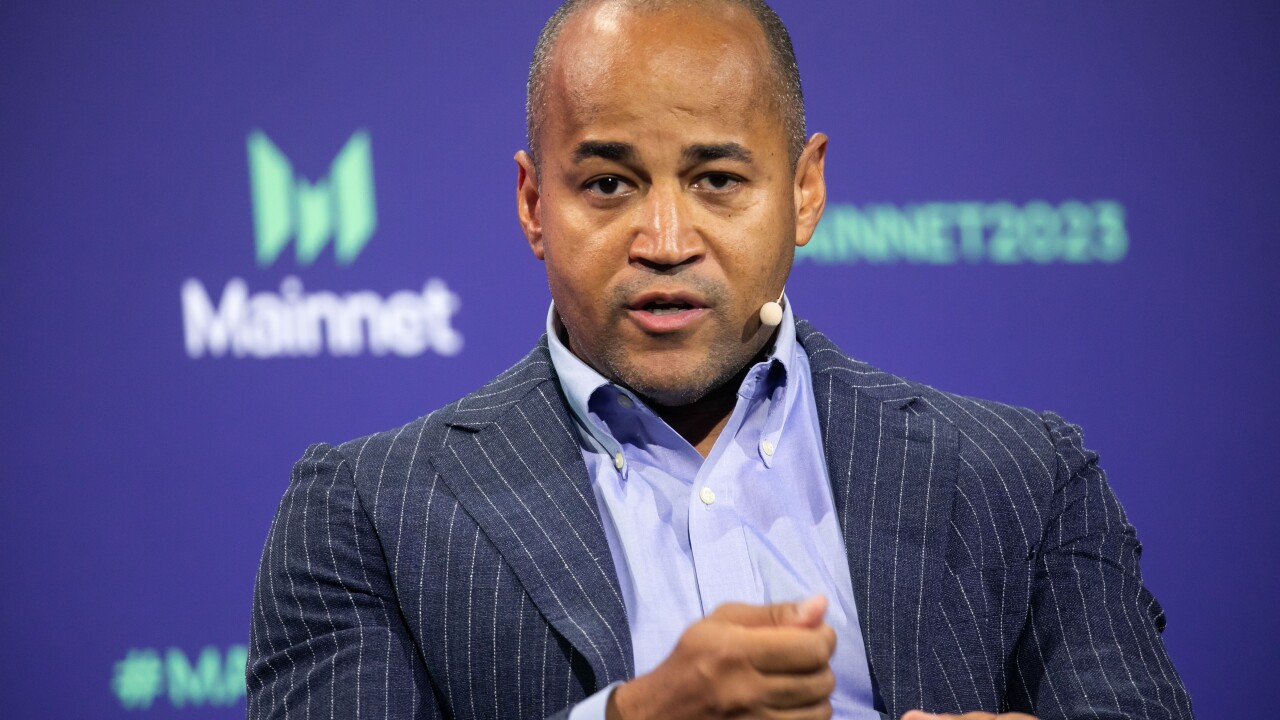For the past week students in a graduate banking course have been running a virtual bank, using sophisticated software to simulate six years of decision-making in 10 days.
The Consumer Bankers Association and Novantas, a New York financial services management consulting firm, last week unveiled Retail MarketSim, a computer simulation program designed to teach bank officers how to run a retail bank efficiently.
"If you talk to heads of retail banks, it's a very difficult job to learn and balance - targeting customer segments, developing products, determining distribution channels, marketing, and budgeting," said Douglas K. Freeman, chairman of the faculty advisory committee at the Consumer Bankers Association Graduate School of Retail Bank Management.
"The ability to allow students to simulate these activities in an academic environment prepares them more than anything else," said Mr. Freeman, who is also chief executive officer of Resource Bancshares Mortgage Group Inc. of Columbia, S.C.
On July 15, a Sunday that many people may have enjoyed at the beach, 58 bank employees headed back to class at the CBA graduate school.
This year for the first time, they were introduced to Retail MarketSim, a learning tool incorporated into the curriculum. The course concludes on Wednesday.
The Charlottesville, Va., school is a three-summer executive education program for bank officers, and its faculty comprises senior executives from the banking industry.
David Kaytes, managing director of Novantas, said Retail MarketSim is the first interactive bank simulation that is student-run without an instructor. Students gain access to the simulator through a PC. Traditional classroom lectures by the faculty accompany the simulation during the 10-day course.
Though modeled after a more general simulation for financial services institutions - the Belgian Bankers Academy's BankSim - MarketSim was created by Novantas specifically to meet a CBA objective: to teach bank officers how to run the retail function of a bank while creating value for shareholders and customers.
The simulation involves a fictional $5 billion-asset retail bank with a fictional customer base, product lines, and distribution network.
Mr. Kaytes said the simulator incorporates real-world customer responses into retail bank management decisions.
"It has the ability to figure out how to optimally serve the customer and get returns for the bank," he said. "We will eventually update the tool to include things such as predatory lending practices and the Community Reinvestment Act, to penalize participants for making certain decisions."
All second-year CBA students are participating in the simulation, whose final round takes place today. Students form teams of three or four, with each student acting as a member of a retail management team at a bank, and together the team members make decisions to improve their bank's performance. The teams and their simulated banks are competing on income and performance measures.
After students make decisions in five key areas - customer segmentation, marketing plan development, product selection, product pricing, and product distribution - through a Web-based interface that presents options, the simulation evaluates their decisions and generates one-year consumer, product, and distribution reports; a financial statement; and a balanced scorecard for students to review.
The process is repeated to simulate six years of results, in all, Mr. Kaytes said. Each set of decisions entered into the computer program by the team represents one year. Just as at a real retail bank, decisions made from year to year at the virtual retail bank affect its overall and long-term performance.
"It's a very robust exercise," said Mr. Freeman, the faculty adviser, who has used the simulation several times.
The CBA has been using simulations in its curriculum for years, he said, but nothing "that can do a very life-like job of simulating what it's like to try to run a retail function at a commercial bank" until now.
Novantas and the CBA invested millions of dollars in cash and professional time in Retail MarketSim, which took a year to develop and six months to test, Mr. Kaytes said.
Also this year Novantas plans to offer banks and other financial institutions in-house bank simulations for staff and senior executives. The computer simulations would be customized versions of Retail MarketSim with specific behaviors, demographics, and products belonging to a particular company so that "they could run strategy war games," Mr. Kaytes said.
"A number of institutions have already expressed interest, and many attended the graduate school as observers," he said. He did not identify the companies.
"This will build an experience-based model of management," Mr. Kaytes said. "The time lag between bank management decisions and results is usually so long that you forget what you did or you lose track of what happened. This tool will improve the management strategy of an institution."





